Insurance Blog
Trick or Treat
Special Property, Special Coverage
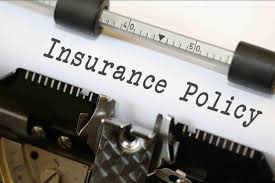
A standard homeowner’s policy offers a limit equal to half of the amount reserved for the residence to protect against loss to a given residence’s personal Property (ex. Your home is covered for $150,000, so your contents and furnishings are covered for $75,000). While this is generous coverage, it doesn’t extend to all types of the property nor for all causes of loss. Certain types of property, because of its high value and liquidity, is far more vulnerable to loss…either easily destroyed, easily stolen or both. So, to compensate for this difference, insurers use coverage restrictions.

Theft Coverage Limitations
When property is lost due to theft, coverage under a standard homeowner policy is severely limited (generally $1,000 – $2,500) for the following types of property:
- jewelry, watches, furs, and gemstones
- dinnerware, serving sets, trophies and similar property made of or plated with silver, gold, platinum or pewter
- for firearms, accessories and related property
Other Coverage Limitations
Several categories of property are subject to very modest limits ($200 – $2,500) of coverage, regardless of the cause of loss (theft, fire, accidental breakage, etc.). Specifically:
- money, banknotes, coins, medals, gold, silver, and platinum (other than jewelry or dinnerware)
- securities, accounts, deeds, tickets, stamps, manuscripts, passports and similar property
- watercraft and related property including their trailers
- trailers not used with watercraft
- business property located in your residence
- business property located away from your residence
- certain types of electronic property which are lost or damaged while in a car or is located away from your home and used for business.
Handling the Limited Coverage Situation
Insurance companies are happy to provide more coverage if they are paid for their trouble. Specifically, limited coverage can be handled using the following methods:
Increased Coverage C Endorsement – this form is only appropriate for property saddled with limited coverage for theft losses. This form is attached to a basic policy and it increases the theft insurance limit (i.e. for jewelry from $1,500 to $5,000).
Scheduled Personal Property Endorsement – this form is used for increasing coverage for property that has protection reduced for all sources of loss. The property is removed from the basic policy’s limits and is covered exclusively by the endorsement. This form takes more work since each item of property has to be listed and assigned a particular insurance limit.
Inland Marine Property Floater – this method works like the personal property endorsement, except that it is a separate policy. This alternative is more appropriate for persons owning substantial amounts of high-valued property. The coverage must often be purchased from specialized insurers and comes at a high cost. In order to qualify for such coverage, you may need to meet special circumstances such as having a residential alarm system or make use of vault storage.
Another Advantage of Special Handling
In order to arrange coverage under a schedule or an inland marine policy, the property must be properly valued. This often involves appraising the property. It’s very helpful to have an expert source to establish the current value of jewelry, furs or other valuable possessions. In fact, such property should be appraised every two or three years since their values often increase over time.
Do you still have questions about property that needs special handling? Talk to an insurance professional about your needs and make sure that you have proper protection.
COPYRIGHT: Insurance Publishing Plus, Inc. 2017
All rights reserved. Production or distribution, whether in whole or in part, in any form of media or language; and no matter what country, state or territory, is expressly forbidden without written consent of Insurance Publishing Plus, Inc.
Internet Liability
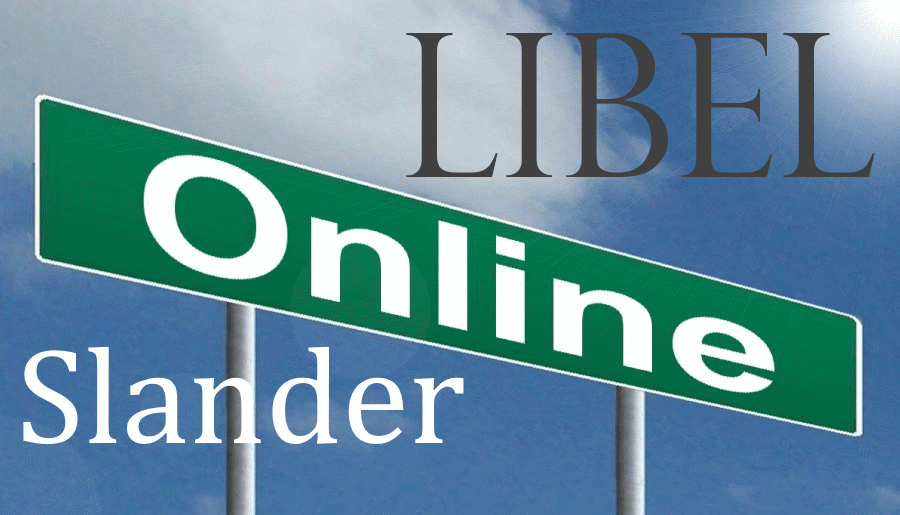
Each day more people decide to create their own Websites, blogs or otherwise participate in social media activities. The reasons for having a Website or blog vary or other activities range from frivolity to earnestness. Personal Websites and blogs commonly describe the host, his or her family, and interests such as a particular hobby, sports, profession, humor, etc. Whatever the reason for creating a Website or blog, they, along with social network activity can represent an additional source of loss that may require additional insurance. The loss potential is directly related to the purpose and content found on the Website.
New Opportunity For Old Losses
Website liability is an extension of the age-old accountability for what you say or write. Such responsibility extends to household members; so it’s important to be aware of what a family’s little E-wizard may be doing. The types of losses that may be created by a Website, blog, or social media activity include:
- Libel – knowingly publishing false information that harms a person’s reputation.
- Invasion of Privacy – disclosing information that interferes with another party’s peace of mind.
- Infringement – violating or interfering with another’s property rights or the right to pursue business
Oops, You May Not Be Covered

Most homeowner policies protect against liability for tangible injury to another person or for actual damage to another party’s property. Liability created by publishing or broadcasting content typically involves a personal (or non-physical) injury that is not covered by a typical homeowner policy. While individuals may be able to add protection (such as add-ons to a homeowner policy or umbrella coverage), certain losses may still be uncovered because they involve intended acts or business activity.
Can You Protect Yourself?
The good news is you can take steps to eliminate or, at least, minimize the possibility of facing electronic publishing-related loss. The first step is to identify areas of concern. The key to understanding and addressing any possible Website liability is to focus upon:
- the nature of the Website or activity
- the Website or account’s contents
- who may be harmed by the site or activity
- how a party may be harmed
It is important that you think hard about these issues and approach the job objectively. Your building a site, blogging or using social media just for “fun” could end with you explaining the punch line in court. Two people can interpret information in radically different ways. Use a method of examining your Website that helps you view it through “fresh” eyes that won’t gloss over important facts. Asking the help of others could be a big plus.
Considerations For Your Web Site, Blog or Social Networking
If you or someone in your household operates or is building a Website, or is active with social media, you need to be aware that the site (or activity) could open you to legal situations. Here are some questions you should consider:
Who created the site or page?
Key consideration: depending upon the circumstances, a private party that created the site for you may share (or even own) the responsibility for damages caused by the site.
What is the purpose of your site or activity?
Key consideration: Is there ANY business activity or purpose? If so, you may have an immediate need to secure appropriate protection.
What content is found at your site or page?
Key consideration: Not only do you have to think about YOUR message, but you must think of other parties that appear at your site such as friends, companion businesses or even miscellaneous links.
Who do you intend to attract to the site and how do visitors use your page?
Key consideration: There’s a big difference in the type of people you’re targeting, such as inviting:
- relatives to see baby pictures or family newsletters
- customers to request product/service information or to place orders
- hobbyists to distribute or solicit stories or advice
- strangers to a forum for discussing sports, political or other topics
Is there anyone you would not want to see the site or page? Why?
Key consideration: Answering this question honestly is critical. It can identify prime sources for possible legal action against you. It may also suggest what precautions you may take, including the easiest action such as eliminating the reference to a person, group or organization.
Does Your Site or Activity Create An Insurance Need?
After examining the key concerns about your Website, you should be prepared to take precautions which may include:
- adding security features to your Website
- changing the content
- adding waivers or disclaimers about links or certain pages that appear on your site
- adding user agreements to your site
- creating guidelines on maintaining current and future content at the site
- changing your homeowner coverage
- buying additional or special personal or business liability insurance
- adding or eliminating a guest book (if you have a guest book, pay close attention to what visitors say)
- eliminating the Website
Once you’ve carefully examined your situation, a discussion with an insurance professional could be an excellent step to identify coverage needs which may include having to buy commercial coverage. The instant and widespread access represented by the Internet creates new perils for individuals. Don’t hesitate to seek the help of an insurance professional or even competent legal advice.
COPYRIGHT: Insurance Publishing Plus, Inc. 2016
All rights reserved. Production or distribution, whether in whole or in part, in any form of media or language; and no matter what country, state or territory, is expressly forbidden without the written consent of Insurance Publishing Plus, Inc.
Handyman Insurance, Covering the Jack of all Trades

Handyman Services
Insurance costs for Contractors can vary widely. Insurance companies view roofers as a high risk. In fact, most standard carriers will not even write coverage for roofers. Why? Because they are one of the ten riskiest jobs. On the other end of the scale are jobs like grading of land.
The Jack of all Trades
Tinker, Handyman, or Jack of all Trades, regardless of the name you use, the risk is the same. A handyman is an individual that can perform a wide range of jobs. At first blush, it would seem that insurance for a handyman would be considered low risk. That is bad thinking.
Insuring a Handyman poses one major problem for insurance companies. What does a handyman do? Work performed is a primary factor in calculating premiums. We know what Roofers do. They install and repair roofs on homes and commercial buildings. A risky endeavor that warrants a higher insurance premium. Occupations that are less risky warrant lower insurance premiums. Such is the case for lawn care providers.
Handyman insurance premiums are significantly lower than roofers. They should be, the work they perform is not that risky. Or is it?
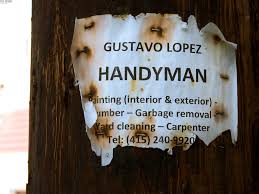
What does a handyman do?
Minor repair, light domestic work, or mechanical jobs are likely responses. Handyman insurance might cost more than one would think because no one knows what they are going to do. In the insurance industry, uncertainly almost always corresponds to higher premiums.
A Handyman might perform low and straightforward risk functions such as:
- Changing a light bulb
- Window cleaning, or
- Cleaning
But it’s more likely that they are performing higher risk jobs:
- Carpentry
- Gutter Cleaning or Repair
- Window installation
But what happens when the handyperson starts playing jobs that require a license? A handyman can quickly alter their risk profile. By performing the following, then we are no longer dealing with a low-risk contractor:
- Heat, AC or plumbing installation or repairs
- Handicapped or Senior Living Modifications
- Electrical work
- Home Security Installation or Repair
- Foundation repair and installation
- Chimney sweep or Fireplace Repair
Some Jack of all Trades will, regularly, perform high-risk jobs. Can a handyman repair a roof?
What happens if, frequently, they start to replace entire roofs?
Could happen?
NO. IT DOES HAPPEN!

Bob the Builder or Tim “The Tool Man” Taylor
Over the years, Hollywood has created several iconic Handymen and women. But it is the contrast between Bob the Builder and Tim “The Tool Man” Taylor that gets my attention. The performance of these two a generation ago are perfect examples. Both portraying handymen, they demonstrate the dilemma that confronts insurance companies.
Looking for someone with a toolbox full of tools that can fix anything? The animated character, Bob the Builder is your man. For an insurance company, Bob is a great risk. His attitude and skills allow him to complete any job. Doing things the right way means that the risk associated with Bob’s work as a handyman is limited. As a result, he should warrant a low insurance premium.
But there is more to this discussion. The term, Jack of all Trades, is synonyms with Handyman. The original phrase was, “A jack of all trades is a master of none, but often better than a master of one.” The expression is intended as a compliment. The original quote placed value on generalist, those with a broad set of skills.

Over time we have modified the phrase to “a Jack of all Trades, and a Master of none. In these instances, the Jack of all Trades is portrayed as someone skilled in many areas. However, their skill levels are most likely to be inferior. Some of you will remember “Home Improvement,” a 90’s sitcom, starring Tim Allen. Tim portrayed another iconic Handyman; Tim “The Tool Man” Taylor. Every week, Tim Taylor brought humor to American homes. We watched as he managed to once again foul-up another home improvement project.
Risk Management for a Handyman
The agents at TruePoint Insurance work with handymen. Our process provides insight into your business. With this information, we can find the appropriate coverages for your Handyman business. We will work with you to craft insurance coverage that addresses your risks.
Insurance is just one component of risk management. We will also work to help you to better understand all the risks. We could just sell you an insurance policy. But our goal is to protect your business in the most effective way we can.
The option is yours, the number is ours. Call now and get started.
(502) 410-5089

Dealers Blanket
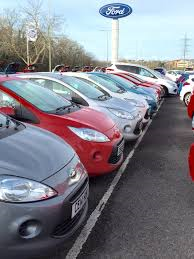
Dealers Blanket Insurance provides physical damage coverage for Auto Dealers. This coverage is often referred to as Dealers Open Lot Insurance. The policy can provide protection for collision and comprehensive losses.
The purpose of the dealer blanket is, in many ways, similar to an individual auto policy. While there are many similarities, there are also some significant differences.
The most critical difference is that Personal Auto policies provide liability coverages. The Dealer Blanket does not. Liability protection for auto dealers is covered via a Garage Liability Policy.
Insurance companies require individuals to provide a VIN or vehicle identification number. They may even go as far as to require a photo of your car on the policy effective date.
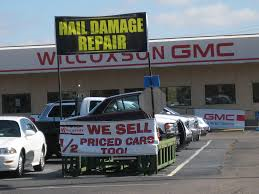
Why are Dealers Different? Why do they need Dealer Blankets?
Car Dealerships are continually turning over their inventory. The average US Car Dealer will have an inventory turnover more than 13 times. What a massive problem! Let’s give the insurance companies some credit. It would be negative for everyone if real-time vehicle information was required. How do Insurance companies keep track of Auto Dealer risk?
Calculating the premium for the dealer open lot insurance is done in one of two ways:
- Non-Reporting – typically lots with inventories of $100,000 or less use this approach. At the beginning of each policy period, the dealer must declare a coverage amount. CAUTION REQUIRED! If a claim is submitted and the dealer’s inventory is higher than the declared amount WE HAVE A PROBLEM. This will trigger the coinsurance clause. As a result, the dealer will be required to pay their fair share of the loss.
- Monthly Reporting Form – this requires the dealer to regularly update the carrier. In most cases, this will require a monthly update. This creates added work for the dealer. But it is cost-effective, and it eliminates concerns associated with paying coinsurance.
There are additional coverages that Dealerships should consider. Workers Comp, EPLI, Business Income, Cyber Liability, and other coverages that apply to most businesses. Another coverage that is specific to the Auto Industry is Garage Keepers. This coverage protects vehicles of customers that have been left in your care. Dealers that also offer repair work will most likely need to add this coverage too.
Hobby or Business

Your hobby may significantly affect your insurance needs. Hobbies often require a large investment intangible property and may even create some legal responsibility to other persons or their property.
Hobbyists: Collectors or Enthusiasts
Hobbies typically involve either collectors or enthusiasts. A collector acquires property that especially attracts him or her. Examples include people who collect stamps, art, coins, autos, antiques, comic books, baskets, dishes, glassware, sports memorabilia, etc. An enthusiast also collects a certain type of property. However, the enthusiast acquires property in order to pursue a given, physical (particularly sporting or artistic) activity. Examples are hunters, musicians, painters, sculptors, cyclists, and enthusiasts of many types, such as fans of model or radio control planes, helicopters, etc.
With collectors, the focus should be placed on the nature of the property being acquired. With enthusiasts, besides attention to property exposure, there should be equal emphasis on the liability exposure that is inherent in their activity.
Property Coverage Needs To be Created By Your Hobby
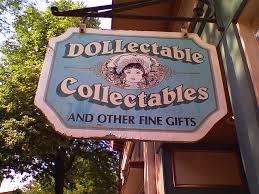
Your special property should be properly insured. Most homeowner policies provide minimal protection for the collectible property. Why? Items such as coins, stamps, antiques, guns, etc., are often fragile. Also, such property is very valuable in relation to its size. The value of collectibles kept in one room may be more valuable than all of the rest of your home’s contents. Regular homeowner coverage is not designed to handle high-valued property that is easily destroyed, lost or is vulnerable to theft.
Even when a collectible property is eligible for a policy’s full coverage, this may not be enough. You may want your special property to be covered from more causes of loss than your family room couch. It may be worthwhile to buy an endorsement to add additional coverage for your collectibles to your homeowner policy. Depending upon the type and value of your collectibles, you may even have to consider specialty coverage which typically makes consideration for replacement cost and for the property that appreciates in value.
Liability Coverage Needs To be Created By Your Hobby
If your hobby is more hands-on, then be sure you’re protected against any legal liability related to your activity. Ask yourself the following:
- Are there any dangers associated with the hobby?
- Does the hobby involve frequent travel to sites or meets?
- Does the activity attract frequent visitors to your home?
- Do you publish hobbyist newsletters or give advice to others?
- Do you actively sell or trade property on or away from your home?
- Does your activity involve equipment that’s inherently dangerous to others?
Get Serious About Protecting Your Hobby
Fortunately, many aspects of a hobby, especially legal liability, are covered by a homeowners policy. However, your activity may need special or even business coverage (see part 2 of this series). The way you spend your leisure time should be a happy diversion. Don’t let your enjoyment be interrupted by inadequate protection. Discuss your special interest with an insurance professional who has a special interest in meeting your coverage needs.
It’s likely that you depend on your homeowner or residential insurance policy to handle losses connected to your hobby or activities. A homeowner (HO) policy usually includes a definition of “business.” A given policy may use a definition so broad that nearly any activity qualifies as a business. In such instances, a hobbyist or enthusiast should consider whether business insurance is necessary.
Let’s say you love photography and you take pictures at weddings and other events to finance this passion. While you consider this to be a hobby, your insurer may define your activities as a business. If your camera equipment is stolen or damaged, there may be as little as $250 protection under your HO policy. HO coverage for business property differs depending on whether it is located at or away from your residence.
Imagine the photography situation again. This time, you’re at a wedding job and have just set-up a perfect shot of the bridal party. As you are snapping a few shots, a large boom stands with hot lighting equipment tips over, injuring the maid of honor and the flower girl. A homeowner policy may exclude coverage if the injured women sue you since the injury is part of business activity.
There are numerous types of sales and service jobs. These include cosmetics, clothing, kitchen supplies, home decorator items, computer repair, web site design, photography, music lessons, auto repair, and many contractors. Each job involves some type of business property that is excluded or severely limited under the homeowner policy. Therefore, each situation may need to be covered by business insurance.
Although independent consultants are in business, too often they think their HO policy will provide coverage because they don’t have special equipment or leave their home office to run their business. Office furnishings such as laptops, iPads, desks, chairs, and file cabinets are subject to HO policy limitations. Without adjustments to the homeowner policy, there may be little or no coverage for property used in a business.
The legal form of the business may create a need for business insurance. If a limited liability company, corporation or partnership is formed, the related activity is a business and needs business coverage. Also, most HO policies will not provide coverage for employees or for any professional liability.
What can you do? First, determine if your activities qualify as a business. Then talk to an insurance professional to determine what coverage is provided by the policies you currently have and what options are available to fill in any gaps in protection.
COPYRIGHT: Insurance Publishing Plus, Inc. 2015
All rights reserved. Production or distribution, whether in whole or in part, in any form of media or language; and no matter what country, state or territory, is expressly forbidden without the written consent of Insurance Publishing Plus, Inc.
Chimney Safety
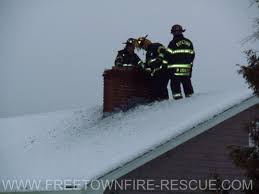
Chimneys often enhance a home’s roofline as well as add a decorative interior feature (fireplace) to a home’s interior. However, it is the chimney’s function that deserves the most attention. They are intended to safely disperse the heat and smoke that result from the use of a fireplace. Fireplace fires reach very high temperatures that take their toll on chimneys. It is risky to regularly use fireplaces without making sure that the chimney is in a safe condition.
An April 2015 report from the U.S. Consumer Product Safety Commission reveals that, on average, more than 20,000 fires occur annually across the U.S. that are directly related to chimneys and chimney connections (found with wood-burning stoves and fireplace inserts).
One particular danger when buying an existing home that has a fireplace is that the chimney may have experienced a previous fire. There are certain signs to look for that are red flags, such as the following:
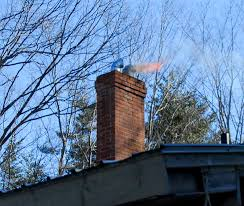
- Chimney flue tiles are missing or damaged
- Creosote (tar colored) flakes appear on roof or ground adjacent to the chimney
- Creosote that looks puffed or bubbled
- Chimney damper appears warped
- Exterior masonry has smoke-darkened cracks
- Rain cap appears darkened from smoke and/or has a distorted shape
- Roofing near chimney appears heat or smoke damaged
Chimney fires can be hidden, intense and even explosive, typically causing very serious levels of damage, often life-threatening. If you make use of a fireplace, wood-burning stove or an insert, it is very important to get them regularly and professionally inspected.
COPYRIGHT: Insurance Publishing Plus, Inc. 2016
All rights reserved. Production or distribution, whether in whole or in part, in any form of media or language; and no matter what country, state or territory, is expressly forbidden without written consent of Insurance Publishing Plus, Inc.
What Fisherville residents need to know about condo insurance
The real estate market continues to be very strong due to the local economy and new developments opening up all over the place. When you are looking to buy real estate in Fisherville, getting a condo could be a great option. If you do buy a condo, you need to make sure that you have it properly covered by a full condo insurance policy. There are several things that a Fisherville, KY resident needs to know about condo insurance.
Valuable Coverage
Most importantly, you need to remember that you get very valuable coverage from condo insurance. This will include coverage in the event your property is damaged or destroyed and will also include liability coverage. In the event of an accident or unfortunate situation, this could prove to be very helpful for you. A home associations policy will not cover your property.
Likely Requirement
Another factor to remember is that you will likely be required to carry the condo insurance policy at all times. If you took out a loan to buy the condo, your lender will likely want you to have condo insurance to make sure that their collateral is protected. Even if you don’t have a mortgage the condo association will likely require that you have coverage. This ensures that you have liability coverage in the event you cause damage to another condo or the common areas.
Your Kentucky condo is a major asset that you need to properly cover by insurance. When you are trying to cover your condo with insurance, you should reach out to TruePoint Insurance in Fisherville, KY to start the process. The insurance professionals at TruePoint Insurance can help you to better assess your individual risks. We will then help you find a condo policy that will properly cover you and your condo.
Halloween, Insurance for Haunted Houses, and other Special Events

Haunted houses have been a part of Halloween in America for over 75 years. Many of the first haunted houses were associated with corporations. Yet, it was the nonprofit sector that made haunted houses a part of Americana.
In recent year’s haunted houses started to fade. Sponsoring organizations such as churches, and school groups, have backed away. Like so many other things in our lives, the culprit is government red tape.
Personal Injury Claims and Haunted Houses
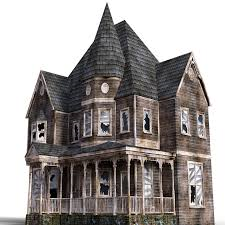
In the past, successful lawsuits against haunted houses have been limited. We can point to three factors that significantly contributed to this:
Consumers can readily identify and assume the risk
Haunted houses are open for only a brief time each year. The risk of something going wrong increases with time. Since these events are seasonal dangerous conditions are less likely to develop.
Proof! Claims of injury or damages were often dismissed due to lack of proof. What’s changed? Cell phones!
Access to information relative to compensation for injuries or damages.
It’s not the haunted house; it’s the Attorneys that scare me!
That was the past. If someone is injured at a Special Event today, they are much more likely to seek compensation. Recently I did an online search for “Haunted Houses.” I should have known better. But the truth is, what I found was horrifying. On page one of my search results was a blog post from a personal injury attorney.
Times have changed. Seasonal Events have become considerably riskier. If you are planning a haunted house, hayride, or any other seasonal event, take a moment an to consider the risk. It’s also wise to reach out to an independent insurance agent for input. Most agents will likely recommend insurance if appropriate. They may also provide insights into your process. Identifying opportunities to reduce or avoid risk. They should also present products to transfer risks associated with production. Some of the more common suggestions are:
Waiver or Release
Before allowing entry most all require a signed release or waiver of liability. As long as the disclosures describe the risk, consumers to sign the waiver assume the risk.
Limited Liability Company (LLC) or Incorporate (Inc.)
Setting up a business entity is an excellent way to limit liability. Undertakings done with these corporate structures are separate from your personal assets.
General Liability Insurance
General Liability Insurance protects a business against bodily injury or property damage claims. Tripping over a cord, cuts caused by exposed nails, injuries or losses caused by chemicals, and falling props: are a few examples where GL coverage would provide protection.
Workers Compensation Insurance
Work Comp protects employees that become injured while working for you. If your special event has employees, you need this coverage. There are very few exceptions to this. Special rules apply to partners, sub-contractors, members, and volunteers. Call an Independent Insurance Agent for a better understanding of your requirements.
Property Insurance
Your Special Event may alter coverage needs on buildings that you own or lease. It is essential to discuss your event with your insurance agent.
Inland Marine
You may use mobile equipment or other property in your haunted house or corn maze. This should be covered with inland marine coverage.
Commercial Auto
Most automobiles used in your Special Event will already have coverage. The question is, will they have enough? Unless your vehicles are owned by an LLC or other business, then your entity is exposed. It needs to be! In the event of legal action, your organization most likely will be named in any lawsuits. To protect yourself from this, you should consider Hired and Non-Owned Coverage.
Volunteer Accident Insurance
Injuries to employees are covered by the work comp policy. But what happens if a volunteer is injured? They can most likely be covered by purchasing a Volunteer Accident Policy. However, there are many gray areas where you might run aground. We suggest that you speak with an independent Insurance Agent beforehand.
Fall is the season for haunted houses, corn mazes, and other seasonal events. Common sense, caution, and communicate with a commercial insurance agent. It’s the best approach if your planning to host any of these.
Call a TruePoint Insurance Commercial Agent at (502) 410-5089. They will be happy to discuss your options in managing your specific risk.
Making Mobile Homes Safer
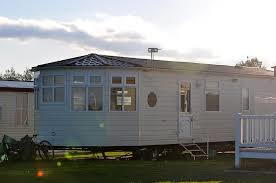
Mobile Homes are Critical
Mobile homes are vulnerable to serious damage from winds and storms since they are smaller and much lighter than stick-built or factory-built homes. It is important to use reinforcements to make them more stable; such as tie-downs.
Tiedowns come in two basic types; over-the-top tie-downs and frame anchors. Over-the-top tie-downs are straps that resist lifting forces and minimize tip-overs. They are usually used with single-wide mobile homes. Strapping is placed with over the top of the roof or over the structure’s sides. Frame anchors are reinforcements that resist lateral forces, making a structureless vulnerable to sliding off supports
In order to stabilize a structure, the tie-downs must be properly anchored to a foundation, slab or the ground. Anchor types include the following:
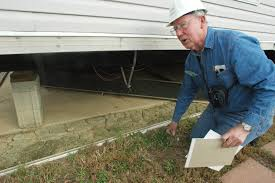
· Hard Rock Anchor
· Concrete Slab Anchor
· Cross Drive Rock Anchor
· Drive or Barb Anchor
· Auger Anchor
· Disc Anchors
Straps and anchors have to be used properly and they have to meet various standards such as placement of anchors, anchor fittings, method of installation and ground/site conditions. When anchored to the ground, it may be necessary to make test its suitability as an anchor. If piers and footings are used they must be able to meet various requirements regarding weight support, dimensions, material quality, pier placement, and other areas. Straps and anchors also have to meet requirements in order to be depended on to withstand the stresses winds and other forces.
Use of tie-downs varies by state, state regulations and soil type. Local building inspectors and mobile and manufactured home builder associations are excellent sources for anchoring and tiedown requirement information. Use of that valuable information, along with insurance, is great methods for fully protecting a mobile home.
COPYRIGHT: Insurance Publishing Plus, Inc. 2017
All rights reserved. Production or distribution, whether in whole or in part, in any form of media or language; and no matter what country, state or territory, is expressly forbidden without written consent of Insurance Publishing Plus, Inc.
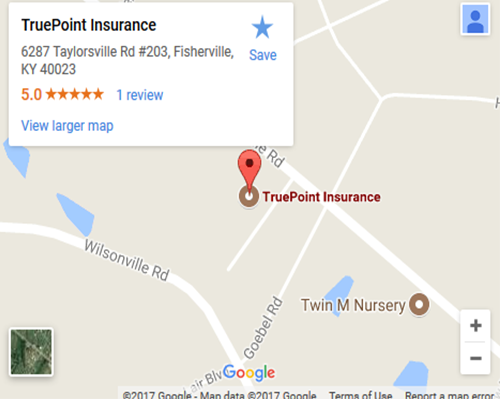
 Contact
Contact
 Email an Agent
Email an Agent

 Click to Call
Click to Call Get Directions
Get Directions


